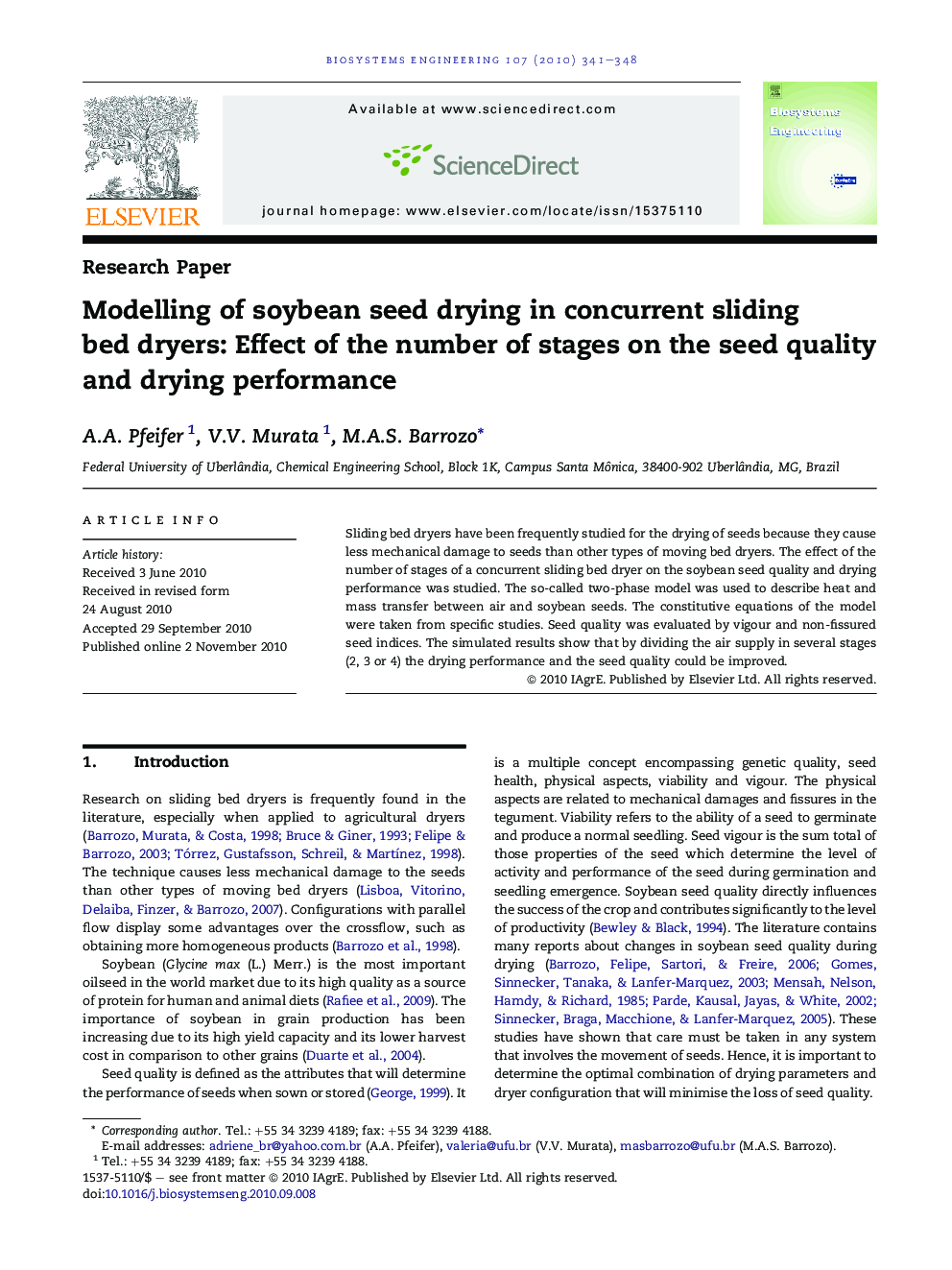| Article ID | Journal | Published Year | Pages | File Type |
|---|---|---|---|---|
| 1711796 | Biosystems Engineering | 2010 | 8 Pages |
Sliding bed dryers have been frequently studied for the drying of seeds because they cause less mechanical damage to seeds than other types of moving bed dryers. The effect of the number of stages of a concurrent sliding bed dryer on the soybean seed quality and drying performance was studied. The so-called two-phase model was used to describe heat and mass transfer between air and soybean seeds. The constitutive equations of the model were taken from specific studies. Seed quality was evaluated by vigour and non-fissured seed indices. The simulated results show that by dividing the air supply in several stages (2, 3 or 4) the drying performance and the seed quality could be improved.
Research highlights► Moving bed dryer in multiple stages yields an improved seed quality and moisture removal. ► Moisture removal rate increased from 23% to 55%, with increasing number of stages. ► The mean increase of vigour index with increasing number of stages was about 18%. ► The increase of non-fissured seeds index with increasing number of stages was of 15%. ► The lowest seed moisture and temperature were attained with the four-stage dryer.
